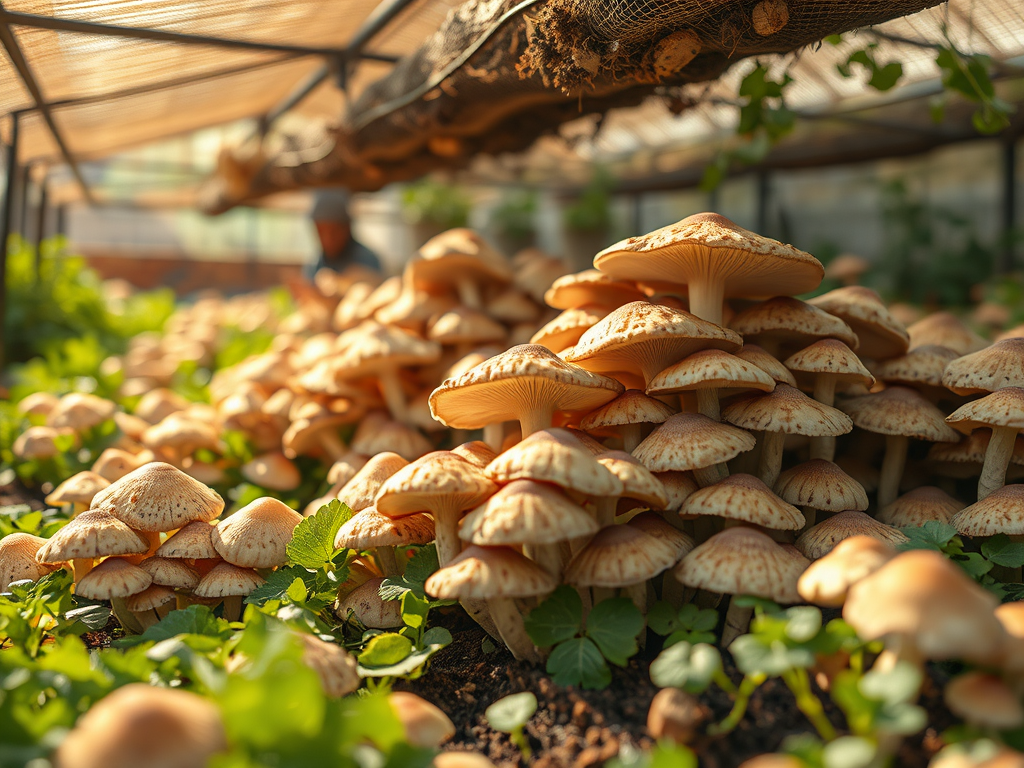In the rapidly evolving world of agribusiness, mushroom farming is emerging as a hidden gem in Africa, creating a new wave of wealth for those who dare to venture into this niche. Often overlooked and undervalued, mushrooms are proving to be a goldmine for farmers who understand their immense potential. With low capital requirements, high-profit margins, and increasing demand in local and international markets, mushroom farming is reshaping the agribusiness landscape across the continent.
Why Mushrooms? A Crop of Opportunity
Mushrooms are a versatile and nutritious food source, rich in protein, vitamins, and minerals. They have a unique appeal because they cater to a wide range of consumers, including vegetarians, vegans, and health-conscious individuals. The global shift towards organic and sustainable foods has further boosted the demand for mushrooms. In Africa, this demand is skyrocketing as consumers become more aware of their health benefits and culinary versatility.
Unlike traditional crops, mushrooms do not require large tracts of land or sunlight to grow. This makes them ideal for urban farming and areas with limited agricultural space. Additionally, they grow rapidly, with some varieties ready for harvest within three weeks. This short production cycle allows farmers to generate income more frequently compared to conventional crops.
Low Investment, High Returns
One of the most attractive aspects of mushroom farming is its low start-up cost. A beginner can start with as little as $200, covering basic equipment like substrate bags, spawn (mushroom seeds), and a small growing area. Despite the minimal initial investment, mushroom farming can yield significant returns. A well-managed farm can produce up to 10 kilograms of mushrooms per square meter, translating to substantial profits when sold in bulk to restaurants, supermarkets, and local markets.
For example, oyster mushrooms, one of the most popular varieties in Africa, sell for about $4 to $6 per kilogram in urban areas. With consistent production and proper market access, small-scale mushroom farmers can easily earn monthly incomes comparable to, or even exceeding, white-collar jobs.
Success Stories from Across Africa
Mushroom farming is not just theoretical success; it has practical examples across Africa. In Nigeria, young agripreneurs are turning to mushroom farming as a means of escaping unemployment. Entrepreneurs like Olumide Adeyemi in Lagos have reported earning over $20,000 annually from a small mushroom farm operating out of a backyard shed.
In Kenya, a cooperative of women farmers in Nakuru County pooled resources to establish a mushroom farm. Today, the cooperative supplies high-end hotels and export markets, collectively earning millions of Kenyan shillings annually. Their success has inspired many others in the community to join the mushroom farming bandwagon.
Challenges and How to Overcome Them
While mushroom farming offers numerous opportunities, it is not without challenges. Farmers often face difficulties in accessing high-quality spawn, which is crucial for consistent yields. Additionally, inadequate knowledge of proper farming techniques can lead to contamination and low productivity.
To address these issues, aspiring mushroom farmers should seek training from agricultural extension services or experienced growers. Many countries now have mushroom farming workshops and online courses tailored to African conditions. Additionally, forming cooperatives can help farmers pool resources to invest in better spawn production and storage facilities.
Another challenge is market access. While demand for mushrooms is growing, some farmers struggle to connect with buyers. Leveraging social media platforms, attending agribusiness expos, and building relationships with restaurant owners and food vendors can significantly improve market access.
The Future of Mushroom Farming in Africa
The future of mushroom farming in Africa looks bright. With the increasing emphasis on sustainable agriculture and healthy eating, the demand for mushrooms will likely continue to grow. Furthermore, the rise of value-added products like mushroom powder, snacks, and supplements opens up even more revenue streams for farmers.
Governments and private investors are beginning to recognize the potential of mushroom farming. For instance, some agricultural development programs now include mushroom farming in their initiatives, providing grants and technical support to farmers.
Conclusion: A Hidden Goldmine
Mushroom farming is undeniably creating a new class of millionaires in Africa. Its low investment requirements, quick returns, and high market demand make it an attractive option for aspiring agripreneurs. With proper training, access to quality spawn, and strategic marketing, mushroom farming can transform lives and contribute significantly to Africa’s agribusiness economy.
For those looking to dive into a profitable and sustainable agribusiness, the underground economy of mushroom farming might just be the perfect opportunity. With determination and the right strategies, the possibilities are as limitless as the growth of mushrooms themselves.



Inspiring.